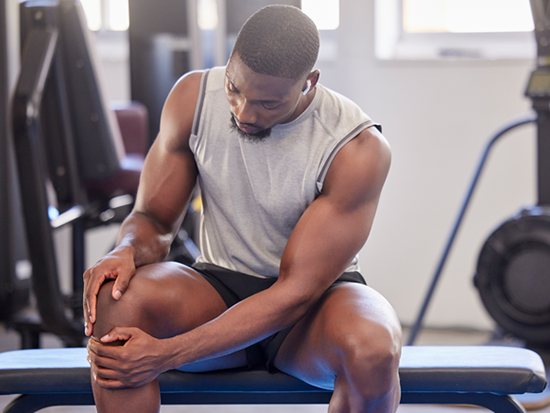 Experts at UAB discuss early arthritis prevention, causes and treatment.While many people may think of arthritis as a condition for older adults, this condition can affect people of all ages, even young, active individuals. Experts at the University of Alabama at Birmingham Sports and Exercise Medicine say some of the most common reasons for early arthritis include prior injuries, wear and tear from significant activity, and the mechanical alignment of the leg.
Experts at UAB discuss early arthritis prevention, causes and treatment.While many people may think of arthritis as a condition for older adults, this condition can affect people of all ages, even young, active individuals. Experts at the University of Alabama at Birmingham Sports and Exercise Medicine say some of the most common reasons for early arthritis include prior injuries, wear and tear from significant activity, and the mechanical alignment of the leg.
“Oftentimes, the combination of a prior injury and the alignment of the leg can place excess pressure on one of the knees compared to the other one and can lead to arthritis in young individuals,” said Aaron Casp, M.D., an assistant professor in the Department of Orthopaedic Surgery.
Symptoms
Some symptoms of arthritis include pain, swelling or redness near a joint, instability, joint stiffness or tension, mobility problems, fatigue, and weakness. Symptoms may vary among age groups.
“The symptoms in younger individuals tend to be more pain with physical activity, limited ability to participate in athletics and intermittent swelling,” Casp said. “Because older individuals’ activity levels tend to be lower, they experience the symptoms of stiffness, startup pain and pain with everyday activities.”
Risk factors
While age is one of the most common risk factors of arthritis, specifically in older adults, there are many other risk factors that may play a role in arthritis in young adults.
Increased-impact activities such as running, jumping or cutting sports that cause the individual to make quick direction changes while running can aggravate arthritis in a younger population.
This means that young adults who play sports such as football, hockey or soccer are more likely to have joint injuries, which increases their risk of arthritis. Trauma to the joints can also raise the risk of arthritis, and repeated physical activity with an injured joint can worsen symptoms.
Arthritis in young adults may be caused by genetics as having a family member with this condition may increase one’s risk of developing this condition. Obesity is a risk factor for arthritis as it puts stress on the joints and increases the risk of arthritis in the ankles and knees.
Prevention
“The best way to prevent arthritis is to maintain a healthy weight, get regular exercise and try to avoid significant injury to the meniscus, which serves as the important shock-absorber within the knee,” Casp said.
Maintaining a healthy weight helps reduce the pressure on the joints and reduce inflammation. Excess weight adds pressure to knees and hips and can lead to inflammation in the body. To maintain a healthy body weight, individuals should get at least 150 minutes of moderate-intensity exercise each week. Exercise also helps improve joint mobility and stability and strengthens the muscles.
Treatment options
There are both surgical and non-surgical treatment options for arthritis.
Non-surgical treatments are focused on symptom management. This includes strengthening the muscles around the joint to help support the underlying cartilage and focusing on low-impact exercises. The use of heating pads or ice pads on aching joints and sore muscles, anti-inflammatory medications, and injections of corticosteroid medication or biologics such as platelet rich plasma can be helpful in managing symptoms.
If pain persists after non-surgical treatment, surgical management options are available. UAB orthopaedic surgeons can conduct an arthroscopic contouring of the roughened cartilage edges. Alternatively, they can perform an osteotomy, which involves cutting the bone and placing a shim or small plate to change the alignment of the bone and transferring the weight from the damaged compartment of the knee to another, healthier compartment.
Casp and his team recently published a study that evaluated whether patients who are at a higher risk for early arthritis and cartilage wear would benefit from an osteotomy.
“Traditionally, surgeons have avoided this potentially helpful procedure in obese patients due to risk of complications,” Casp said. “We found that active patients with early arthritis in the knee and correctible alignment issues can gain significant benefit, with low complication rates, even if their BMI is over 30. This can provide significant symptom relief and allow people to get back to their athletic endeavors.”
From early arthritis to ligament tears and cartilage damage, the team of surgeons at UAB Sports and Exercise Medicine is equipped to provide evidence-based, personalized treatment to each of their patients. Make an appointment today by calling 205-930-8339 or visiting uabmedicine.org.